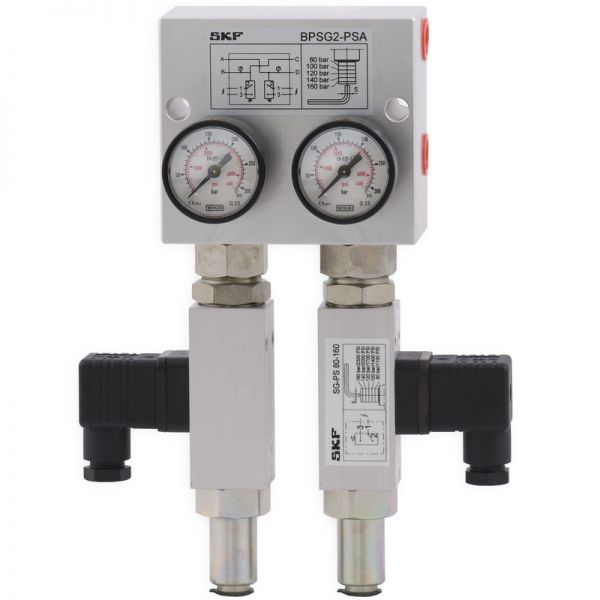Pressure Relief Valve – Function, Applications, and Benefits
A pressure relief valve is an essential element in hydraulic and pneumatic systems. It ensures that the pressure in a system does not rise above a specified limit, thus protecting systems and machinery from damage caused by overpressure. In this article, you'll learn everything you need to know about pressure relief valves – from how they work to their main applications and benefits.
What is a pressure relief valve?
A pressure relief valve (also called a pressure relief valve) is a safety valve that regulates the pressure in a closed system. Once the preset pressure is exceeded, the valve opens and releases excess fluid or air. This keeps the pressure in the system stable and prevents overload.
It works using a spring mechanism or a hydraulic control mechanism. The valve opens automatically as soon as the set pressure is exceeded and closes again as soon as the pressure drops.
How a Pressure Relief Valve Works
The pressure relief valve operates according to a simple principle:
- Pressure setting: The maximum pressure is set using a screw or a spring.
- Pressure monitoring: The valve continuously monitors the pressure in the system.
- Overpressure opening: If the set pressure is exceeded, the valve opens automatically.
- Pressure relief: Excess fluid (oil, gas, or air) is discharged to reduce the pressure.
- Return to the starting position: As soon as the pressure drops below the limit, the valve closes automatically.
Important applications of pressure relief valves
Pressure relief valves are used in various industries. Typical applications include:
- Hydraulic systems: For pressure regulation in hydraulic systems of construction machinery, presses, and industrial equipment.
- Pneumatics: In compressed air systems to prevent overpressure and ensure smooth operation.
- Water supply: In pump systems and pipelines to prevent damage caused by pressure peaks.
- Heating systems: To protect boilers and heating systems from overpressure. Automotive industry: In braking and cooling systems to ensure safety.
Advantages of pressure relief valves
A pressure relief valve offers numerous advantages:
- Protection against damage: Prevents costly damage to machinery and equipment caused by overpressure.
- Safe operation: Ensures smooth and safe system operation.
- Longer service life: Contributes to extending the service life of equipment by preventing overloads.
- Energy efficiency: Optimizes energy consumption by maintaining a constant pressure.
- Easy to maintain: Most valves are robust and require minimal maintenance.
Important purchasing criteria for pressure relief valves
When selecting a pressure relief valve, several factors should be considered:
- Pressure range: The maximum working pressure should be suitable for the system.
- Material: Depending on the medium (oil, water, air), the valve material should be corrosion-resistant.
- Adjustability: Some valves allow flexible pressure adjustment.
- Flow rate: Depends on the amount of fluid discharged.
- Certifications: Look for DIN and ISO certifications for high quality.
Conclusion: Why pressure relief valves are essential
A pressure relief valve is an essential component in hydraulic and pneumatic systems. It protects against damage, improves operational reliability, and contributes to system efficiency. When selecting a suitable valve, it is important to consider the maximum working pressure, the medium used, and the specific requirements of the application. This ensures optimal protection for your equipment and systems.

